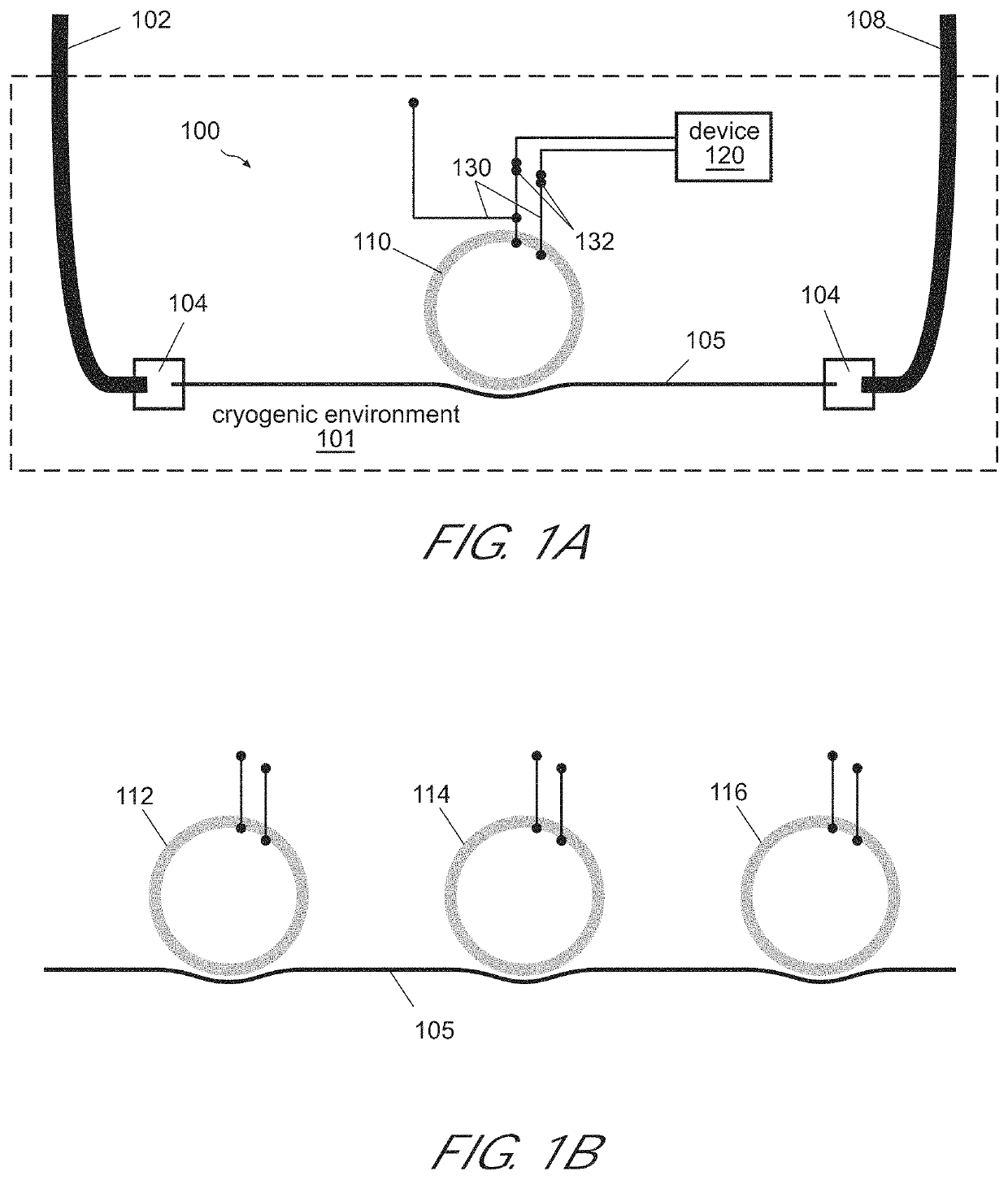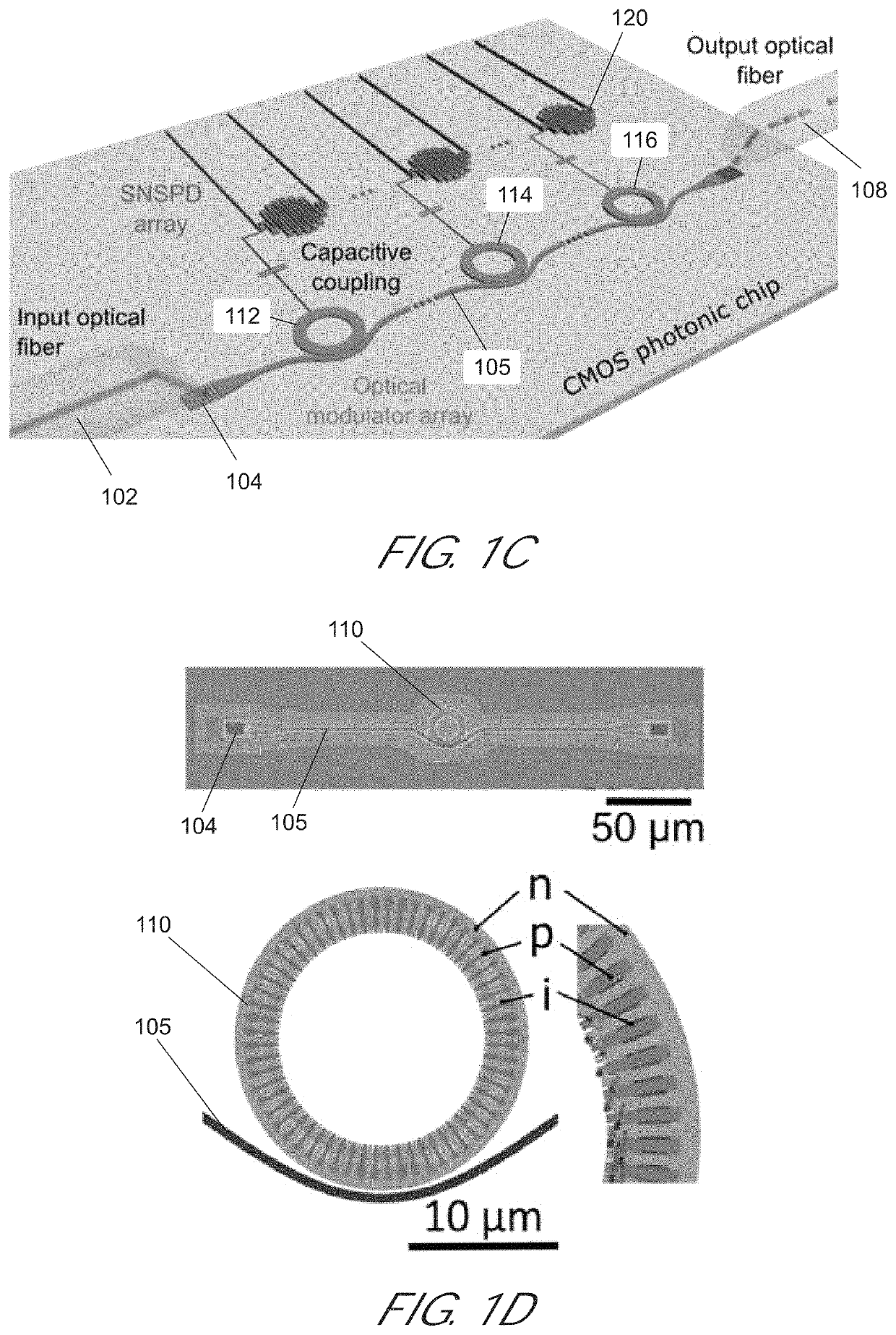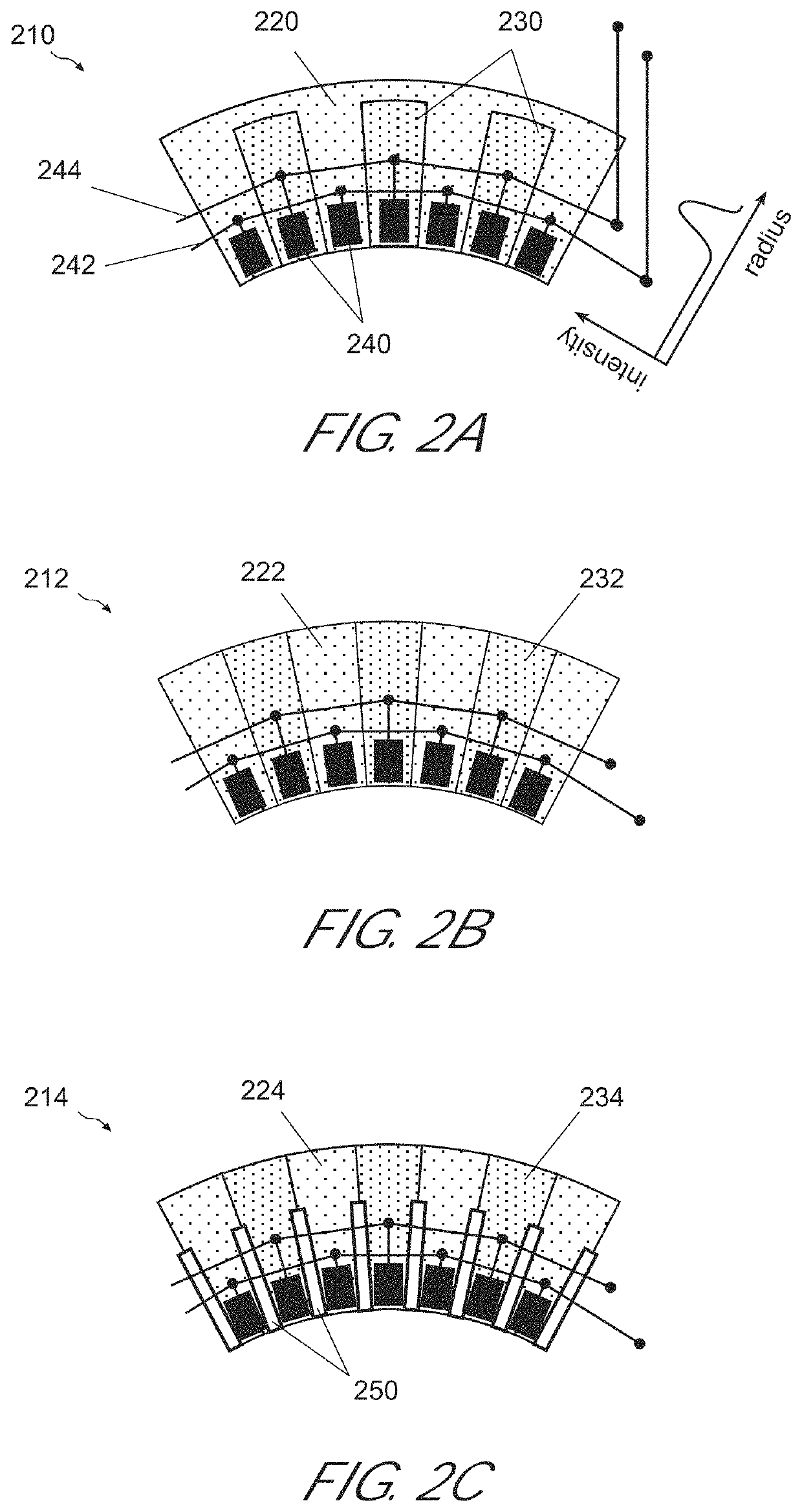Forward-biased modulator for cryogenic optical readout
a modulator and forward bias technology, applied in non-linear optics, instruments, optics, etc., can solve the problem of reducing the thermal load on the cryostat, reduce the thermal load on the cryostat, and reduce the complexity of the circuitry
- Summary
- Abstract
- Description
- Claims
- Application Information
AI Technical Summary
Benefits of technology
Problems solved by technology
Method used
Image
Examples
Embodiment Construction
[0038]Most systems operating at cryogenic temperatures communicate with systems operating at room temperature. Conventionally, this transfer of data relies on the use of electrical cables, which have certain disadvantages. Electrical cables present a high heat load to the cryostat due to thermal conduction of the metal wires and the need for amplification inside the cryostat, with milliwatt-scale power dissipation. Electrical cables add long latencies due to the long cable lengths needed to ensure correct thermal anchoring. Also, each electrical cable has a limited bandwidth density, and the cryostat has a limited size so that a large number of cables for handling many signal channels may not be possible.
[0039]The inventors have recognized and appreciated that an alternative approach to cryogenic electrical read-out and data transfer is optical readout and optical data transfer. For example, a signal generated by a cryogenic device in the cryostat is used to drive an electro-optical...
PUM
| Property | Measurement | Unit |
|---|---|---|
| temperature | aaaaa | aaaaa |
| resonant wavelength | aaaaa | aaaaa |
| resonant wavelength | aaaaa | aaaaa |
Abstract
Description
Claims
Application Information
 Login to View More
Login to View More - R&D
- Intellectual Property
- Life Sciences
- Materials
- Tech Scout
- Unparalleled Data Quality
- Higher Quality Content
- 60% Fewer Hallucinations
Browse by: Latest US Patents, China's latest patents, Technical Efficacy Thesaurus, Application Domain, Technology Topic, Popular Technical Reports.
© 2025 PatSnap. All rights reserved.Legal|Privacy policy|Modern Slavery Act Transparency Statement|Sitemap|About US| Contact US: help@patsnap.com



